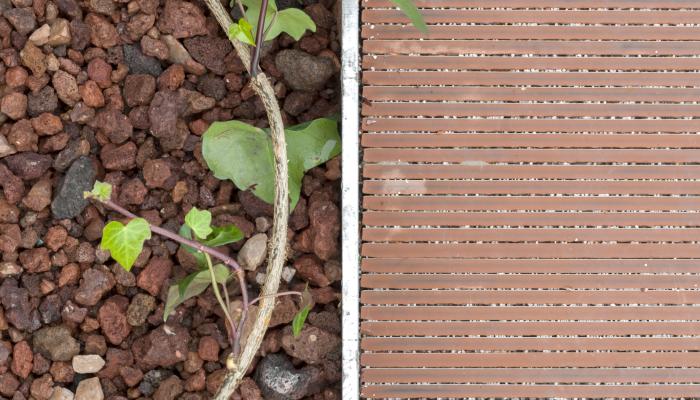
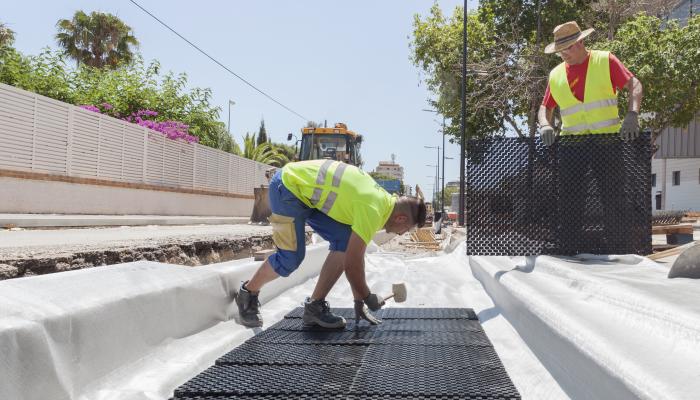
These cells are made of polypropylene, a recycled and recyclable material, and are about 30 mm thick, which have a tongue-and-groove joint system for the union between the pieces.
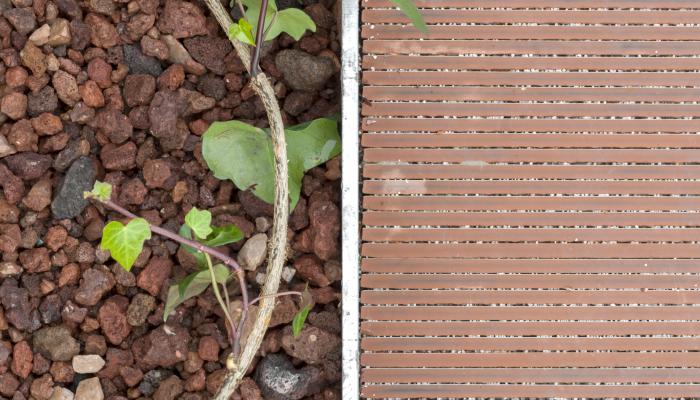
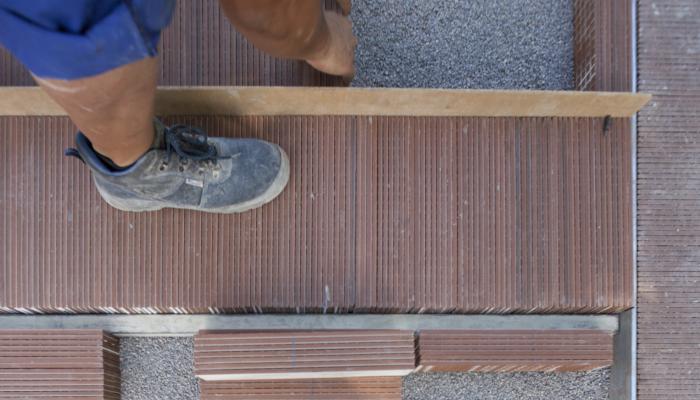
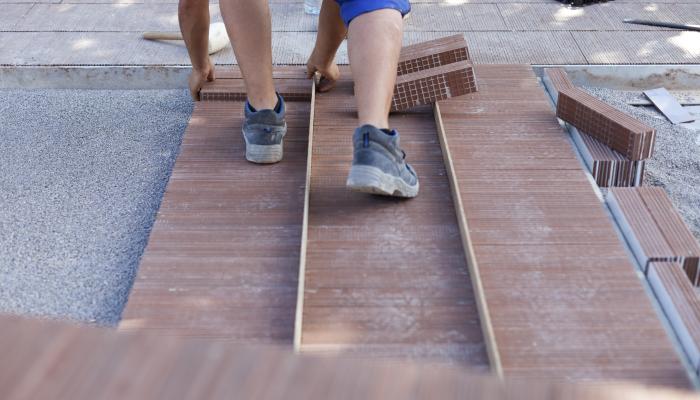
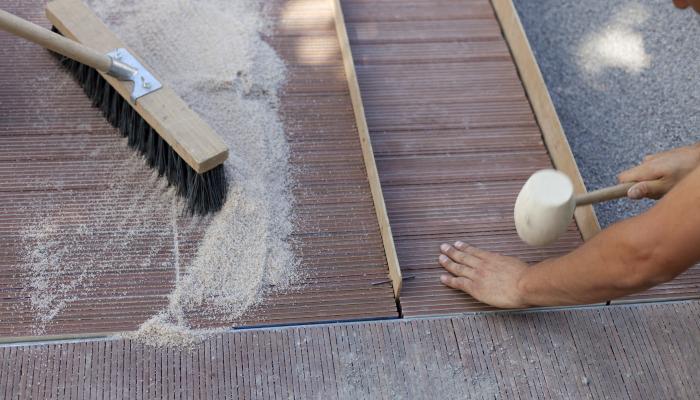
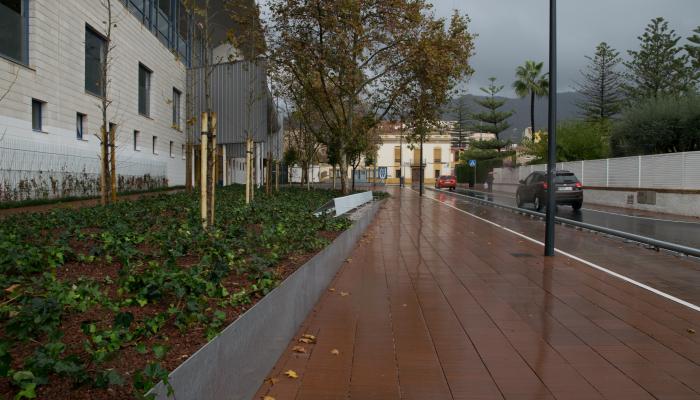
The European LIFE CERSUDS project (Ceramic Sustainable Urban Drainage System) is developing sustainable urban drainage systems (SUDS) that use ceramic materials of low commercial value as a filter system for construction or paving. Its main objective is to improve the capacity of cities to adapt to climate change and to promote the use of green infrastructures in their urban planning for the rehabilitation of such urban areas. To achieve this, LIFE CERSUDS has developed and implemented a sustainable urban ceramic drainage system with low environmental impact. A demonstration has been developed for this purpose in the municipality of Benicàssim (Castellón).
In recent decades, the total area of cities in the EU has increased by 78% while the population has only grown by 33% (EEA, 2006). These data require us to rethink soil treatment in cities due to the enormous environmental impact generated by the sealing of urban surfaces, which increases the consequences of climate change.
One of the measures to reduce this surface sealing consists in the use of filter pavements to minimize the impacts of urban development in terms of the quantity and quality of runoff (at source, during transport and at destination), as well as maximize landscape integration and the social and environmental value of the undertaking itself (ecosystem services).
The general principle of these pavement types is to collect and pre-treat runoff, and, if their quality characteristics and the terrain allow it, infiltrate it into the lower layers of the soil. All this reduces runoff and the associated pollutant load such as hydrocarbons or heavy metals that are common in driveways and parking lots and can seriously affect the final receiving media if they are not sufficiently biodegraded or are retained in the filtration process.
The materials most frequently used in this type of surface include: grass, gravel, grates (plastic and concrete) integrated with grass, porous concrete pavements and porous asphalt. LIFE CERSUDS proposes the use of permeable ceramic pavement consisting of ceramic pieces of low commercial value available in stock, which allow improvements in the management of these products.
The main objective of LIFE CERSUDS is to improve the adaptation capacity of cities to climate change and promote the use of green infrastructures in their urban planning through the development and implementation of a demonstration project for sustainable urban drainage system (SUDS) made of ceramic pieces of low commercial value, with low carbon emissions. This demonstration has been developed in the municipality of Benicàssim, Castellón province.
The ceramic SUDS implemented thus consists of a permeable surface with a low environmental impact, the skin of which is formed by an innovative system that uses said ceramic tiles of low commercial value. Its main objective is adaptation to climate change in areas increasingly subject to intense rainfall and times of drought, such as the cities of the southern Mediterranean area.
This general objective is split into the following specific objectives:
- reduce flooding due to torrential rains by increasing permeable surfaces in cities.
- reuse water stored during the rainy season for its use in dry periods.
- reduce runoff volumes and peak flows that end up reaching the collector network and consequently the treatment plant or the receiving environment.
- Integrate the treatment of rainwater in the urban landscape.
- protect water quality, reducing the effects of diffuse pollution and thus avoiding problems in treatment plants.
- decrease CO2 emissions associated with the manufacture of paving materials, since the material used for this purpose is ceramic material in stock and with low commercial value.
- offer a quality aesthetic finish avoiding puddles, increasing the comfort and safety of the streets in rainy weather.
- develop a sustainable ceramic drainage system with greater environmental efficiency for urban areas.
- demonstrate that this ceramic sustainable drainage system is valid for the rehabilitation of light transit areas and allows better stormwater management in areas with certain geoeconomic conditions.
- reduce the amount of ceramic material with low commercial value currently stored by companies by providing a new commercial solution and increasing the benefits to the industry.
- guarantee its transferability beyond the completion of the project through training activities and the development of a business plan for the solution, aimed at both stakeholders and the target audience of the solution and that also helps to raise awareness and enable replicability.
- generate accurate technical documentation for project replication in other cities with permeable pavements based on the principles of the project demonstration.
SUDS (Sustainable Urban Drainage Systems) provide cities with new means and techniques to enable a sustainable approach for managing rainwater in the city, by integrating runoff management into the urban landscape driven by the natural behavior of the basin in question prior to the construction and development process. In this way, the SUDS:
- allows valuating rainfall as a resource
- reduces the generation of wastewater
- provides an alternative water resource
- allows groundwater recharge
The demonstration project developed in Benicàssim consisted in the construction of a SUDS through the development of a ceramic permeable pavement, using ceramic tiles of low commercial value. The project area was a section of a light traffic and pedestrian street in a consolidated urban environment of approximately 3,000 m2.
The new solution provided consists of a permeable pavement made up of ceramic pavers arranged on draining bases that percolate water into the ground, leading the excess water to a tank/canal located under the bike lane lining the path, which allows its recovery for irrigation of the landscaped areas, acting also as a collector and therefore delaying and decreasing the contribution to the network during precipitation peaks.
The concept of the system entails cutting the ceramic tiles into strips of a specific width, which are later grouped together to form the permeable ceramic modules. The development of these modules provides speed and simplicity when laying the pavement.
During the development of the project we have defined the specifications, designed, tested and validated the permeable ceramic system from a performance, economic and environmental point of view, with the aim of guaranteeing the durability of the system and promoting its incorporation into urban spaces, through the development of a system design guide along with training material for Universities.
In a climate change setting and in areas of great water scarcity like the Mediterranean basin, sustainable drainage solutions from low-value ceramic tiles implanted in urban areas, such as the Life CERSUDS project at hand, acquire significant importance from an adaptation perspective. With them, the capacity of cities to adapt to climate change is improved, providing solutions to possible drainage problems, allowing the recovery of rainwater and promoting the use of green infrastructures in urban planning by reusing these waters in irrigation systems.
On the other hand, these solutions contribute to the prevention of risks from potential natural flood disasters, representing also a great step toward the adaption of cities to climate change.
The actors necessary to achieve the objectives proposed in the LIFE CERSUDS project are both the Associated Consortium, for its development and application, and the Monitoring Committee formed by various entities from the Regional Working Group created in the E2STORMED project (www.e2stormed.eu), which allows leveraging their experience, needs and concerns in the definition and monitoring of the project.
The Consortium is made up of:
- the Institute of Ceramic Technology ITC-AICE, Project Coordinator, with extensive experience in the application of ceramics in urban planning (http://www.itc.uji.es/)
- the University Institute for Research in Water and Environmental Engineering (IIAMA), of the Polytechnic University of Valencia UPV, with its own experience in water management and sustainable urban drainage systems (https://www.upv.es/)
- Benicàssim City Council, a town with special sensitivity to the risks of climate change (http://ayto.benicassim.es/)
- CHM, a construction company with extensive experience in its field and a clear orientation toward R&D and innovation (http://chm.es/)
- TRENCADIS de SEMPPRE, a company with a clear innovative character and sensitivity toward the environment (http://trencadisdesempre.com/)
- CCB Bologna Ceramic Center (Italy), ceramic materials research and testing center of the University of Bologna (http://www.centroceramico.it/)
- CTCV Centro Tecnológico da Cerâmica e do Vidro (Portugal), a laboratory for analysis, technical tests and standardization of products and systems in the field of construction and environment (http://www.ctcv.pt/)
In turn, the authors of the demonstration project were F-VA "Fernandez-Vivancos Architect" and Eduardo de Miguel; the hydraulic design of the system was developed by Sara Perales Momparler of GreenBlueManagement.
The permeable pavement used in the CERSUDS project reduces surface runoff by almost 90%, making it possible to collect and recover water, which, once decanted, decontaminated and stored, can be later reused for irrigation of green areas.
The project proposal to use permeable paving using paving stones or ceramic pieces of low commercial value on draining bases that filter the water and lead it to a storage or evacuation tank or channel allows for its effective recovery, while preventing at the same time the sewage network from becoming overloaded during precipitation peaks.
In addition, this type of SUDS reduces diffuse pollution and improves the quality of the water as opposed to other traditional systems, allowing to reach pollutant removal rates of more than 70% for hydrocarbons, more than 50% for phosphorus, more than 65% for nitrogen, and more than 60% for heavy metals.
Lastly, the project aims to demonstrate that the permeable ceramic pavement has a reduced carbon footprint, which, coupled with the other advantages, makes it a very attractive solution for the rehabilitation and regeneration of urban areas.
With the implementation of this type of SUDS projects, the performance of the original functions of the soil is enhanced through the installation of permeable drainage pavements that allow a better use of a scarce natural resource such as water, as well as a reduction in the impact of possible urban floods, while already manufactured and stored ceramic products with low commercial value and little market opportunities can be commercialized.
Like all SUDS systems, the main limiting factor in its application is actually the structural capacity of the saturated soil or substrate, since, in order to be able to adequately manage extraordinary precipitation episodes, some perimeter spillway is necessary that is capable of dissipating the excess water flow and directing it to some conventional drainage system or to another SUDS.
Similar project drafts are currently being developed for the municipalities of Aveiro (Portugal) and Fiorano (Italy), countries that are participating in the LIFE CERSUDS consortium, seeking to boost the replicability of these types of projects in these cities.
The project has a total budget of € 1,817,972, 60% (€ 986,947) of which is co-financed by the European Commission through the LIFE 2014-2020 Program on Environment and Climate Action of the European Union, under reference LIFE15 CCA/ES/ 000091 for Environmental Policy and Governance.
Likewise, the project has had the support of the Generalitat Valenciana through IVACE.
The cost of this experimental demonstrator project, including craft manufacturing of the ceramic pavement, project and construction management, personnel costs dedicated to the management and the construction work itself has amounted to € 757,105.
According to the data recorded in the period from September 2018 to July 2019, it is estimated that 1,060,000 liters (just over a million liters) have fallen on the demonstrator area, in a total of 28 precipitation events of more than 1mm of accumulated rainfall (with a total of 322 mm of accumulated rainfall in the period). The system has managed 100% of the rainwater fallen on its surface, with only 14% (149,255 liters) having been discharged to the conventional drainage system once the water was filtered. The remaining 914,695 liters (86%) were returned to the field once filtered.
From the standpoint of improving the quality of the water filtered by the system, the results show percentages of removal of suspended solids in the order of 80%, coupled with very significant reductions in BOD5, COD, hydrocarbons, grease and oils. From a microbiological point of view, the water stored in the cistern is shown to be suitable for reuse in irrigation.
Within the European strategy for adaptation to climate change, the project affects the following EU lines of action:
- Climate Change Adaptation
- EU COM(2011)112 communication – "A roadmap for moving to a competitive low carbon economy in 2050"
- EU COM(2013) 216 final communication – “An EU Strategy on Adaptation to climate change”, which clearly promotes the transition to green infrastructure and to ecosystem service-based approaches in the urban context.
- EU COM(2013) 249 final communication – “Green Infrastructure: Enhancing Europe’s Natural Capital”
- SWD (2013) 137 final document – “Adapting infrastructure to climate change”, which explicitly explains the vulnerability of urban infrastructures to changing rainfall regimes.
- Environment and efficiency in the use of resources
- European Floods Directive (2007/60/EC Assesment and Management of flood risks)
- European Water Directive (2000/60/EC Water Framework Directive)
- Hydraulic Public Domain Regulation (art. 126 ter. 7 of RD 638/2016)
- Sectoral Territorial Action Plan on flood risk prevention in the region of Valencia (PATRICOVA, Decree 201/2015 )
The LIFE CERSUDS project has an expected duration of 3 years. The project started on October 1, 2016 and is scheduled for completion on September 30, 2019, although dissemination and monitoring actions will continue beyond this date.
- Ministerio de Agricultura, Alimentación y Medio Ambiente. 2006. Plan Nacional de Adaptación al Cambio Climático, PNACC.
- Ministerio de Medio Ambiente. 2008. Expansión urbana descontrolada en Europa. Un desafío olvidado. ISBN: 978-84-8320-439-9.
- Mira J.; Bartolomé M.; Corrales J.; Llorens M.; Ramón J. 2012. Prospectiva y diseño de nuevos productos basados en la reutilización y reciclaje de subproductos cerámicos. Congreso mundial de la calidad del azulejo y el pavimento cerámico, QUALICER 2012.
- Perales S.: Andrés-Doménech I. 2008. Los sistemas urbanos de drenaje sostenible: una alternativa a la gestión del agua de lluvia.
- Rodríguez Bayon J. 2008. Análisis de los aspectos de depuración y degradación de los hidrocarburos presentes en las aguas procedentes de la escorrentía urbana, en los firmes permeables. Tesis Doctoral.
- Rodríguez Hernández J.; Castro Fresno D.; Calzada Pérez M.A.; Vega Zamanillo A. 2011. Firmes permeables. Cuaderno 02/2011 de la Plataforma Tecnológica de la Carretera (PTC).
- Soriano L.; Del Moral L.; Lara A.; Martínez J.; Sánchez L. 2017. Los sistemas de drenaje urbano sostenible: desarrollo actual y tendencias de futuro. Fundación Nueva Cultura del Agua. 28 pp.
- Trapote A.; Fernández H. 2016. Técnicas de Drenaje Urbano Sostenible. IUACA Univ.Alicante. 71 pp.
- UNE EN 1344:2015 “Adoquines de arcilla cocida. Especificaciones y métodos de ensayo”.
- Woods Ballard B.; Wilson S.; Udale-Clarke H.; Illman S.; Scott T.; Ashley R.; Kellagher R. 2007. The SUDS Manual. CIRIA C753. ISBN 978-0-86017-760-9.
Javier Mira Peidró
Área de Hábitat - ITC Instituto de Tecnología Cerámica UJI
Correo electrónico: javier.mira@itc.uji.es
Teléfono: 964342424



